Best XML Parsing Tools to Buy in December 2025
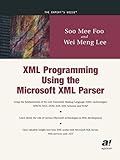
XML Programming Using the Microsoft XML Parser
- AFFORDABLE PRICES FOR QUALITY USED BOOKS TO SAVE ON READING.
- SUSTAINABLY SOURCED, REDUCING WASTE AND SUPPORTING ECO-FRIENDLY CHOICES.
- THOROUGHLY CHECKED FOR QUALITY TO ENSURE YOU GET A GREAT READ!


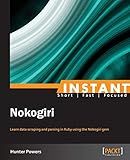
Instant Nokogiri


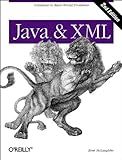
Java & XML, 2nd Edition: Solutions to Real-World Problems


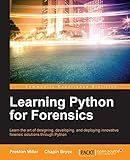
Learning Python for Forensics


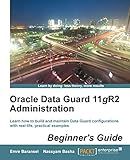
Oracle Data Guard 11gR2 Administration Beginner's Guide


Parsing an XML string into an array in PHP involves multiple steps. Here is a description of how to accomplish this:
To begin, first load the XML string using the simplexml_load_string() function. This function converts the XML string into an object that can be easily traversed. For example:
$xmlString = 'Value 1Value 2';
$xml = simplexml_load_string($xmlString);
Once the XML string is loaded, you can access its elements using the object notation. For instance, to access element1, you would use $xml->element1. This will give you the corresponding value.
To convert the XML object into an associative array, utilize the json_encode() and json_decode() functions. First, encode the object into JSON format using json_encode(), and then decode it back into an array using json_decode() with the true parameter set. For instance:
$jsonString = json_encode($xml); $array = json_decode($jsonString, true);
Now, the XML string has been parsed into an array, and you can access its elements as key-value pairs. For example, to access the value of element2, you would use $array['element2'].
Remember to handle any errors that may occur during the parsing process to ensure the XML string is valid, and the parsing is successful.
What is the difference between SimpleXML and DOM in PHP?
SimpleXML and DOM are both libraries in PHP used for working with XML documents, but they have some differences in their functionality and usage.
- Simplicity: SimpleXML is designed to be a simple and lightweight library for parsing XML. It provides an easy-to-use API with a simplified object-oriented approach for accessing XML elements and attributes, making it more beginner-friendly. On the other hand, the DOM extension provides a more powerful and comprehensive API, but it is also more complex and can be intimidating for beginners.
- Memory: SimpleXML is memory-friendly as it loads the entire XML document into memory and represents it as a tree of SimpleXMLElement objects. This makes it efficient for small to medium-sized XML documents. In contrast, the DOM extension loads the entire XML document into a tree-like structure known as the Document Object Model (DOM), which can consume more memory, especially for larger XML files.
- Modification: Although both SimpleXML and DOM support reading and searching XML documents, DOM provides more flexibility for modifying the XML structure. It allows users to create, remove, or modify XML elements, attributes, and text nodes. SimpleXML, on the other hand, focuses more on simplifying the process of accessing and extracting data from XML documents, and it does not provide as many methods for modifying the XML structure.
- Error Handling: SimpleXML has automatic error handling, which means it will throw exceptions on certain errors, such as malformed XML or accessing non-existent elements. In contrast, the DOM extension defines its own error handling functions, which users need to implement to handle errors manually.
In summary, SimpleXML is a lightweight and beginner-friendly library for reading and extracting data from XML documents, while DOM is a more powerful and flexible library suitable for more complex XML manipulation tasks. The choice between the two depends on the specific requirements of the XML processing task at hand.
How to convert XML string to JSON in PHP?
To convert an XML string to JSON in PHP, you can use the SimpleXML extension and the json_encode function. Here's an example:
$xmlString = ' John Doe john@example.com 30 ';
// Load the XML string $xml = simplexml_load_string($xmlString);
// Convert XML to JSON $json = json_encode($xml);
// Output the JSON echo $json;
The output will be a JSON string:
{"name":"John Doe","email":"john@example.com","age":"30"}
Note that this method assumes that the XML string is well-formed. In case the XML is invalid, you may need to perform some error handling.
What is the role of XML Schema in PHP parsing?
XML Schema is used in PHP parsing to validate and impose structure on XML data. XML Schema defines the rules, constraints, and data types for the elements and attributes in an XML document.
When parsing an XML document using PHP, XML Schema can be used to ensure that the data conforms to a specific structure and set of rules defined in the schema. This helps in ensuring the integrity and consistency of the XML data.
PHP provides various functions and libraries, such as SimpleXML and DOM, to parse XML documents. These libraries can be combined with XML Schema validators, such as libxml or XSD extension, to validate the XML data against the specified schema.
By using XML Schema in PHP parsing, developers can easily validate XML data, handle errors or inconsistencies, and ensure the expected structure and format of the XML document, making it easier to extract and manipulate the required data.
How to access XML elements using SimpleXML in PHP?
To access XML elements using SimpleXML in PHP, you can follow these steps:
- Load the XML file or string using the SimpleXMLElement constructor.
$xml = new SimpleXMLElement($xml_string);
- Access specific XML elements by their names using object notation or array access.
// Access element using object notation $element = $xml->elementName;
// Access element using array access $element = $xml['elementName'];
Note: If there are multiple elements with the same name, you will get a SimpleXMLElement object representing the first occurrence.
- Retrieve the value of the element by casting the SimpleXMLElement object to the desired data type.
// Retrieve value as string $value = (string)$element;
// Retrieve value as integer $value = (int)$element;
// Retrieve value as float $value = (float)$element;
// Retrieve value as boolean $value = (bool)$element;
- Iterate through multiple elements with the same name using a foreach loop.
foreach ($xml->elements as $element) { // Access values and perform actions }
- Access attributes of an element using attribute notation or array access.
// Using attribute notation $attributeValue = $element->attributeName;
// Using array access $attributeValue = $element['attributeName'];
That's it! You can now access XML elements and attributes using SimpleXML in PHP.
How to handle large XML files in PHP parsing?
When dealing with large XML files in PHP parsing, it is crucial to use memory-efficient techniques to avoid memory exhaustion and optimize performance. Here are some steps you can follow:
- Disable the PHP "max_execution_time" limit by setting it to 0 to allow for longer processing times. ini_set('max_execution_time', 0);
- Use an XML parser extension like SimpleXML or XMLReader. XMLReader is recommended for large XML files, as it provides a streaming API that doesn't load the complete file into memory at once.
- Use XMLReader to read through the XML file in a loop, node by node, instead of loading the entire file into memory. This allows for efficient memory usage. $xml = new XMLReader(); $xml->open('large_file.xml'); while ($xml->read()) { // Process each node here } $xml->close();
- Utilize XMLReader's functions like "read()" and "NodeType" to traverse the XML file and access specific nodes. This will help you extract the required data without loading the entire file.
- Implement a logic to handle specific nodes and extract required data. For example, use conditional statements to parse specific elements or attributes.
- If you need to store the extracted data, consider using databases or writing to separate files instead of storing them in memory. This will reduce memory consumption.
- If the XML file is too large to process in a single pass or requires complex processing, consider breaking it into smaller parts or processing it in chunks.
- Optimize your code by minimizing unnecessary memory allocations, releasing resources when no longer needed, and using efficient data structures.
By following these steps, you can efficiently handle large XML files in PHP parsing without overwhelming memory resources.
How to parse XML attributes in PHP?
There are several ways to parse XML attributes in PHP, but one common approach is to use the SimpleXMLElement class provided by PHP's built-in SimpleXML extension.
Here's an example of how to parse XML attributes using SimpleXMLElement in PHP:
$xmlString = ' ';
$xml = new SimpleXMLElement($xmlString);
foreach ($xml->book as $book) { $id = (string) $book['id']; // Get the value of the id attribute $title = (string) $book['title']; // Get the value of the title attribute $author = (string) $book['author']; // Get the value of the author attribute
echo "Book \[id={$id}, title={$title}, author={$author}\]" . PHP\_EOL;
}
In this example, we first create a SimpleXMLElement object by passing the XML string to its constructor.
Then, we use a foreach loop to iterate through each <book> element. For each book, we access the attributes using array-like syntax (e.g., $book['id'], $book['title'], $book['author']) and cast them to strings using (string).
Finally, we simply echo the parsed attribute values.
Running this code should output:
Book [id=1, title=PHP Basics, author=John Smith] Book [id=2, title=JavaScript Fundamentals, author=Jane Johnson]
Keep in mind that this is just one way to parse XML attributes in PHP. Other options include using the DOM extension or XMLReader, depending on your specific requirements.
How to parse XML data from a URL in PHP?
To parse XML data from a URL in PHP, you can use the SimpleXML or DOMDocument libraries. Here's an example using SimpleXML:
$url = "http://example.com/data.xml"; $xml = file_get_contents($url);
if ($xml) { $data = simplexml_load_string($xml);
// Access the XML data
$title = $data->title;
$description = $data->description;
// Output the data
echo "Title: " . $title . "<br>";
echo "Description: " . $description;
} else { echo "Failed to fetch XML data."; }
In this example, we use the file_get_contents() function to retrieve the XML data from the specified URL. Then we use simplexml_load_string() to parse the XML and convert it into a SimpleXMLElement object.
You can then access the XML data using object properties or methods, as shown with $data->title and $data->description. Finally, you can output the extracted data according to your needs.
What is the significance of XML namespaces in PHP parsing?
XML namespaces are used to avoid naming conflicts when different XML vocabularies or markup language specifications are combined in a single document. In PHP parsing, XML namespaces are significant in the following ways:
- Parsing and Accessing XML: PHP uses XML namespaces to parse XML documents with different vocabularies or markup languages. Namespaces allow PHP to differentiate between elements and attributes from different namespaces within an XML document, making it easier to access and manipulate specific data.
- Resolving Conflicts: Namespaces ensure that element and attribute names do not clash, even if different XML vocabularies use the same name. By assigning different namespaces to elements with the same name, PHP can identify and differentiate them during parsing, preventing conflicts.
- Organizing XML Elements: XML namespaces help organize XML elements into logical groups based on their namespaces. It allows developers to group related elements together, enabling better organization and understanding of the XML structure.
- Encouraging Modularity and Reusability: XML namespaces promote modularity and reusability by allowing different XML vocabularies to be combined and integrated seamlessly. This enables developers to reuse existing XML components, reducing the need to reinvent the wheel and enhancing interoperability.
- Interoperability: XML namespaces facilitate interoperability between different systems and applications that use XML. By standardizing the way XML elements are defined and organized, namespaces make it easier for systems to understand and exchange XML data correctly.
Overall, XML namespaces play a crucial role in PHP parsing by providing a mechanism to avoid naming conflicts, organize XML elements, encourage reusability, enhance interoperability, and facilitate the parsing and manipulation of XML documents with diverse vocabularies.
How to parse XML string into an array in PHP?
To parse an XML string into an array in PHP, you can use the SimpleXMLElement class along with the json_encode() and json_decode() functions. Here is an example:
$xmlString = ' John Doe 28 New York Jane Smith 32 London ';
// Create SimpleXMLElement object $xml = new SimpleXMLElement($xmlString);
// Convert XML to JSON and then decode into an array $array = json_decode(json_encode($xml), true);
// Access the array elements foreach($array['person'] as $person) { echo "Name: " . $person['name'] . ""; echo "Age: " . $person['age'] . ""; echo "City: " . $person['city'] . ""; }
This code will parse the XML string into an array and then iterate over each person element, printing out their name, age, and city.
